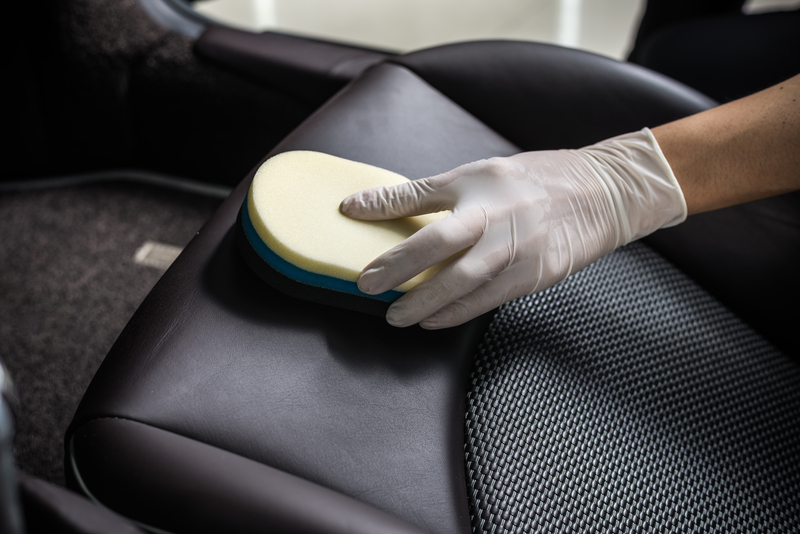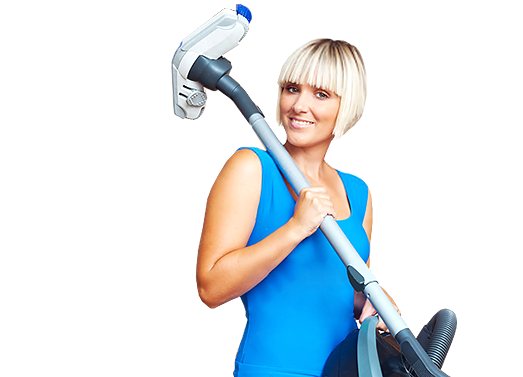Mastering a Dust-Free Home: Effective Tips for Allergen Reduction
Posted on 09/09/2025
Mastering a Dust-Free Home: Effective Tips for Allergen Reduction
Are you tired of constantly battling dust in your home? Do seasonal allergies and dust-related symptoms disrupt your comfort and wellbeing? A dust-free house is a healthier, happier place for everyone--especially allergy sufferers. In this comprehensive guide, we'll explore proven methods for reducing allergens and dust at home. Enjoy cleaner air, improved health, and easier breathing with our practical tips for allergen control and dust management.
Why Prioritize a Dust-Free Home?
Maintaining a dust-free home is about far more than cleanliness. Dust is a complex mixture of dead skin cells, pollen, pet dander, dust mites, fibers, and even chemical residues. When allowed to accumulate, these particles not only make cleaning a chore but also aggravate allergies, asthma, and respiratory conditions. By minimizing indoor dust and allergens, you'll create a healthier living environment for your entire family.
Main Sources of Dust and Allergens Indoors
- Outdoor particles: Pollen, soil, mold spores.
- Pets: Fur, dander, saliva, and tracked-in allergens.
- Textile fibers: Carpets, curtains, upholstery, and bedding.
- Human skin cells: Shed continuously indoors.
- Household items: Books, stuffed toys, cluttered surfaces.
- Dust mites: Tiny organisms that thrive in bedding and fabric.
Understanding where dust originates helps you target your cleaning efforts for maximum allergen reduction.

Essential Strategies for Allergen and Dust Control
1. Adopt a Consistent Cleaning Routine
Frequent cleaning prevents the buildup of dust and allergens. Here's how to make your cleaning routine more effective:
- Dust regularly using a damp microfiber cloth rather than a feather duster, which merely redistributes particles.
- Vacuum floors, carpets, and upholstery at least twice a week with a vacuum equipped with a HEPA filter.
- Launder bedding, curtains, and throw rugs weekly in hot water to kill dust mites.
- Wipe down surfaces, electronics, and vents frequently.
Pro Tip: Clean from high to low--start with upper surfaces and finish with the floor to prevent falling dust from dirtying already cleaned areas.
2. Control Indoor Humidity
Dust mites and mold thrive in damp conditions. To master allergen reduction, aim to keep your home's relative humidity between 30%-50%:
- Use a hygrometer to monitor humidity levels.
- Deploy a dehumidifier in humid spaces like basements and bathrooms.
- Ventilate with exhaust fans during and after cooking, showering, or laundry.
- Fix any plumbing leaks or water infiltration issues promptly.
Reducing indoor moisture discourages dust mite reproduction and helps keep mold at bay.
3. Choose Low-Allergen Flooring and Furnishings
Some surfaces trap and harbor more dust than others. Here's how to make home decor choices that support a dust-free space:
- Opt for hard flooring like wood, laminate, or tile instead of wall-to-wall carpets.
- Choose leather, vinyl, or tightly woven furniture that's easy to wipe clean.
- Minimize area rugs, especially in high-traffic or bedroom areas--if using rugs, select washable options.
- Replace heavy drapery with blinds or washable curtains.
Every swap reduces dust-collecting surfaces, simplifying your allergen control efforts.
4. Eliminate Clutter and Hidden Dust Traps
Decluttering your home is not just an aesthetic choice. Every extra pile, stack, or collection can become a dust reservoir:
- Store items in closed cabinets or containers rather than open shelves.
- Regularly purge magazines, paper piles, and unused knick-knacks.
- Box up or donate excess toys, stuffed animals, and decorative pillows.
- Ensure laundry and linens are stored in drawers with lids or in sealed bags.
A tidier home means fewer hiding places for dust, making day-to-day cleaning far more effective.
5. Upgrade Air Filtration and Ventilation
Air quality plays a crucial role in achieving and maintaining a dust-free home. Here's how to maximize your air purification:
- Install a HEPA filter in your HVAC system.
- Change or clean HVAC and air purifier filters every 1-3 months.
- Use standalone air purifiers in sleeping spaces and main living areas.
- Keep windows closed during high pollen seasons, and use screens when windows are open.
- Prohibit indoor smoking, which adds particles to the air and worsens allergy symptoms.
Remember, high-quality air filtration systems can trap particles as small as dust mites and pollen, drastically improving indoor air quality.
6. Control Pet Allergens and Dander
Pets are wonderful companions, but they can also be a significant source of household dust and allergens. Reduce the impact of pet dander with these steps:
- Bathe and brush pets regularly--outdoors, if possible.
- Keep pets out of bedrooms and off furniture, especially for severe allergy sufferers.
- Wash pet bedding weekly in hot water.
- Clean litter boxes and cages frequently to avoid spreading dust and allergens.
Prompt grooming and strict pet boundaries help everyone breathe easier at home.
7. Fight Dust Mites Effectively
Dust mites are microscopic creatures living in bedding, upholstered furniture, and fabric. They are among the most common indoor allergens. To control and reduce dust mites:
- Use allergy-proof covers on mattresses and pillows.
- Wash all bedding, blankets, and stuffed toys in hot water weekly.
- Remove wall-to-wall carpeting for easier cleaning.
- Avoid fabric headboards and heavy drapes in the bedroom.
Every small adjustment helps decrease the population of dust mites and keeps allergy symptoms under control.
8. Establish Entryway Protocols
Many substances--including pollen, mold spores, and soil--make their way indoors on shoes, clothing, and pet fur. Keep allergens out of your home with these entryway tips:
- Place doormats at every entrance and clean them regularly.
- Establish a "shoes-off" policy indoors to limit dirt and dust.
- Designate hooks or hampers for outdoor jackets and laundry.
- Wipe pet paws before entry.
Stopping dust at the door means less work and cleaner indoor air.
The Science Behind Allergen Reduction at Home
Scientific studies confirm that maintaining a low-dust home environment significantly reduces the frequency and severity of allergy and asthma symptoms. Regular cleaning, controlled humidity, effective ventilation, and the right household materials form the foundation of a healthier indoor space. When you take a proactive approach to dust and allergen management, you not only reduce visible dirt but also control invisible irritants that impact your quality of life.
Common Allergens & Their Effects
- Dust Mites: Trigger sneezing, runny nose, itchy eyes, and asthma attacks.
- Pet Dander: Can remain airborne for hours, causing persistent allergies.
- Pollen: Enters through windows, doors, and on clothes during certain seasons.
- Mold Spores: Thrive in damp areas, causing congestion and respiratory distress.
Removing and controlling these allergens brings tangible improvements to comfort and wellbeing.

Long-Term Benefits of Mastering a Dust-Free, Allergen-Reduced Home
- Improved air quality--less sneezing, coughing, and sinus irritation.
- Better sleep--fewer nighttime allergy symptoms for sounder rest.
- Lower risk of asthma and eczema flares.
- Reduced medication reliance--potential to minimize antihistamine and inhaler use.
- Peace of mind and enhanced quality of life for every family member.
By consistently applying these strategies for dust and allergen reduction at home, you'll notice a fresher, cleaner, and more comfortable household environment for years to come.
Bonus: Advanced Tips for Ultra-Allergen Control
- Install central vacuum systems that vent outdoors to eliminate recirculated dust.
- Choose low-VOC paint and furnishings to reduce chemical irritants in the air.
- Use washable covers for all pillows--including decorative ones, and wash often.
- Consider professional duct cleaning if you suspect major dust accumulation in your ventilation system.
Conclusion: Your Roadmap to a Dust-Free Home
Mastering a dust-free, allergen-reduced home doesn't mean achieving perfection overnight. Instead, it's about adopting healthy habits, making strategic choices, and staying consistent with cleaning and maintenance. From reducing clutter and optimizing air quality to controlling humidity and upgrading fabrics, each change brings you closer to an allergy-friendly home where everyone can thrive.
Start today by implementing one or two tips from this guide, then build on your progress. Over time, you'll transform your living space into a true sanctuary--clean, comfortable, and virtually dust-free.
Ready to breathe easier and enjoy a healthier home? Use these comprehensive tips for effective allergen and dust reduction and say goodbye to the discomfort of allergies--once and for all.
Related Articles:




